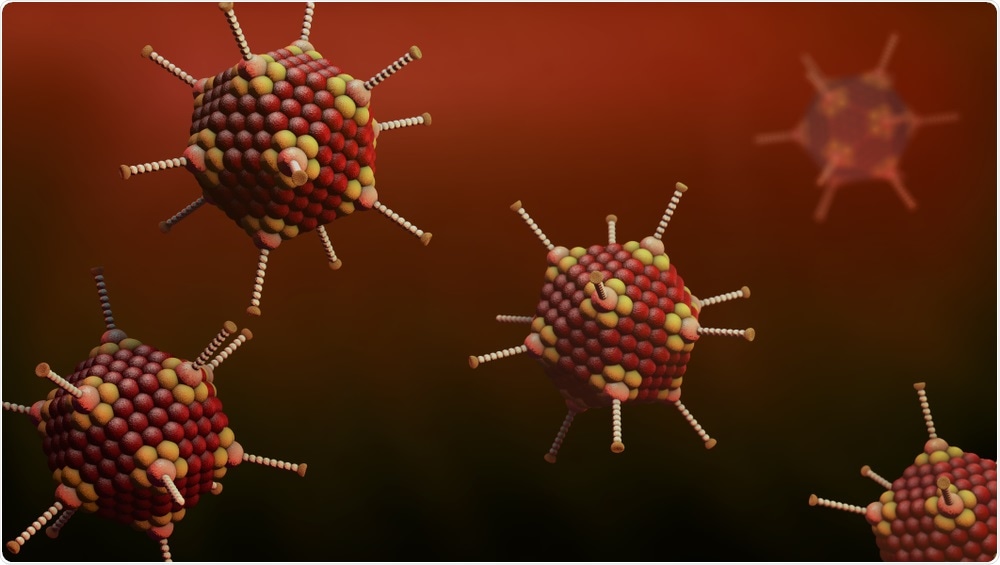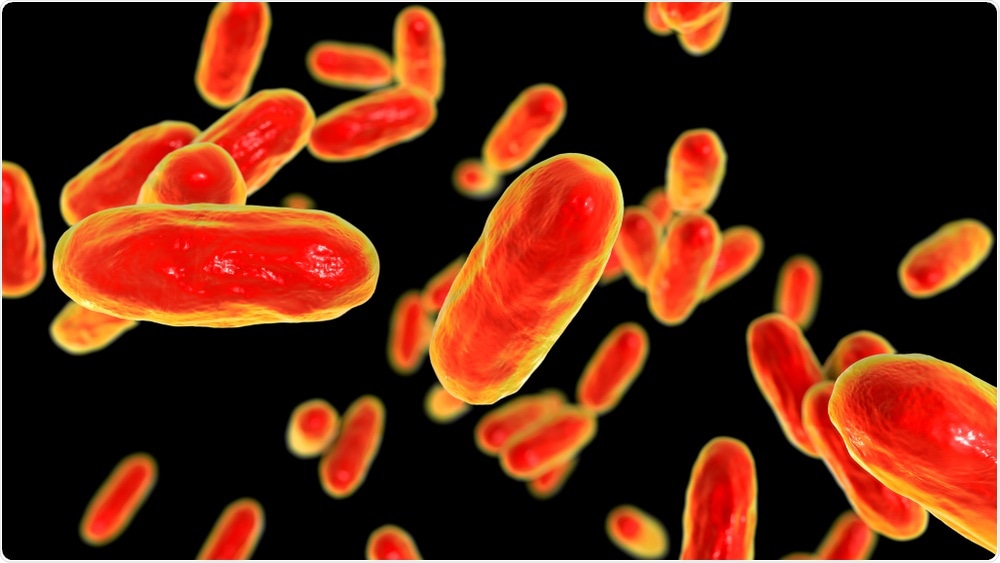As the causative agent of the disease severe acute respiratory syndrome coronavirus 2 (SARS-CoV-2) rapidly spread within and then out of China, from late January 2020, it has caused more than 554,000 deaths among over 12.23 million reported infections in almost every country of the world. The initial spread was in the winter months in the Northern Hemisphere when a number of community-acquired respiratory viruses (CARVs) were already circulating.

3D model of the SARS-CoV-2 virus at atomic resolution. Image Credit: Visual Science

 This news article was a review of a preliminary scientific report that had not undergone peer-review at the time of publication. Since its initial publication, the scientific report has now been peer reviewed and accepted for publication in a Scientific Journal. Links to the preliminary and peer-reviewed reports are available in the Sources section at the bottom of this article. View Sources
This news article was a review of a preliminary scientific report that had not undergone peer-review at the time of publication. Since its initial publication, the scientific report has now been peer reviewed and accepted for publication in a Scientific Journal. Links to the preliminary and peer-reviewed reports are available in the Sources section at the bottom of this article. View Sources
What are the Common CARVs?
The commonly encountered CARVs include influenza virus A and B, respiratory syncytial virus, metapneumovirus, parainfluenzavirus, and human coronaviruses. Unlike other CARVs, however, SARS-CoV-2 progresses to cause severe pneumonia. However, all the CARVs are significant contributors to the increase in illness and death that occurs in winter, among people with weakened immunity and those who have healthy immunity.
The clinical signs of respiratory infection caused by CARVs are nonspecific and include nasal blockage or a running nose, sore throat, cough, fatigue, fever, and body pain. These are encountered in COVID-19 also, but loss or significant alteration of taste is prominent in the latter as well. This may warrant multiplex nucleic acid testing (NAT).
The current study attempts to describe how SARS-CoV-2 affects circulating CARVs during the period from January 1 until March 29, 2020, since early reports indicate that both types of respiratory infection do not coexist in individuals with healthy immunity. Later studies show that they can occur together at rates of about 5%, especially with influenza A and B, respiratory syncytial virus, and rhinoviruses.
The Study: Analyzing Respiratory Infections
The researchers from the University of Basel looked at the patients with symptoms resembling influenza, who were enrolled in two hospitals in Basel, Switzerland. They took two swabs from nasopharyngeal and oropharyngeal sites for each adult, but only the latter for children, and carried out viral testing using two reverse transcription-quantitative nucleic acid test (RT-QNAT) targeting specific viral sequences of the S gene encoding the spike glycoprotein, one developed in their laboratory and one commercially available.

Virus cells of the adenovirus family in icosahedral shape. Image Credit: Christoph Burgstedt / Shutterstock
They also carried out a phylogenetic analysis of the SARS-CoV-2 genome sequences. Concerning CARVs, they performed qualitative multiplex NAT respiratory panel testing for the following pathogens:
- influenzavirus (IV)-A (A/H1, 147 A/H1-2009, A/H3), IV-B
- human respiratory syncytial virus (HRSV)-A/B
- adenovirus (HAdV)
- human metapneumovirus (HMPV)
- rhinovirus/enterovirus (HRV)
- parainfluenzavirus (HPIV) 1-4 separately
- human coronavirus (HCoV)-NL63, -229E, -OC43, -HKU1, -middle-east respiratory syndrome (MERS)-CoV
- Bordetella pertussis
- Bordetella parapertussis,
- Chlamydia pneumoniae
- Mycoplasma pneumoniae

Bacteria Bordetella pertussis, 3D illustration. Image Credit: Kateryna Kon / Shutterstock
The two laboratory-designed SARS-CoV-2 RT-NAT assays validated the WHO assay, targeting the S and the N genes but not the corresponding sequences of the human CoV genomes. They then conducted parallel testing with the Basel-S, Roche-E, and WHO-E gene assays on over 7,600 samples.
They obtained concordance in 97.5% of all samples, of which 87% were negative, and 11% were positive. All these results were confirmed independently by the N-gene assay. When the results were discordant, as occurred in 2.5%, the majority were positive for the Basel S gene in 2.2% but negative for the Roche E gene, while 0.2% opposite pattern was observed. Of the former, 60% were confirmed by the N gene assay, which was, however, confirmed only in 0.04% of the latter. The rest were discordant with the N gene assay results.
It is noteworthy that the discordant results came from samples with low viral loads.
Overall, 12% of COVID-19 infections were confirmed, and further analysis showed that among this group, males were slightly more affected, while the median age was 49 years vs. 43 years in the non-COVID-19 group. Age was not related to higher viral load, however. Among children and adults, viral detection occurred in 4% and 12%, respectively.
SARS-CoV-2 vs. CARVs
The researchers then analyzed a group of about 2,400 patients with flu-like illness, all of whom had been tested by the multiplex-NAT during this period. In about 40% of cases, one or more pathogens were detected.
Each week, the prevalence of SARS-CoV-2 and CARVs dipped up and down, but in the seventh week, there was a sharp surge in CARVs, up to week 10, when SARS-CoV-2 increased steeply. Cumulative infection rates also reached 48% for the latter virus by week 13, with rhinovirus and the flu virus reaching 13% and 12% respectively by this time.
When only those samples were analyzed in which both CARV-multiplex-NAT and RT-QNAT for SARS-CoV-2 were performed, they found that overall, the latter was detected in 17% of cases, rhinovirus in 22% and influenza virus in 20%. When weekly detection rates were compared, SARS-CoV-2 was found to take over all other CARVs with the exception of rhinovirus.
Patients with adenovirus infection were more likely to be younger than with other CARVs or SARS-CoV-2. In adults, the only age difference was in patients with SARS-CoV-2 who were significantly older. In children, however, the CARV was detected at higher rates than in adults, even when both types of infection were examined together.
Adenovirus, parainfluenzavirus, respiratory syncytial virus, rhinovirus, and influenzavirus-A/B were more likely to be detected in children of 16 years or less. Still, human CoV, metapneumovirus and M. pneumoniae were more common in children and adults.
SARS-CoV-2 Replaces CARVs
Coinfections with multiple CARVs were very rare, and mostly in children below 2 years. The coinfection of CARVs with SARS-CoV-2 was found in less than 1% of cases. Overall, say the researchers, “CARV detection was associated with a high negative predictive value of 98.1% for SARS-CoV-2 infection.” This increased from 97% in adults or over 16 years to 99% in CARV-positive children.
If the multiplex-NAT was negative in the period after the first SARS-CoV-2 case was detected, the chances of testing positive for the latter shot up dramatically from 1% to 48% in the period from week 9 to week 13. Thus, while CARVs dominated the early part of the study period, up to week 10, they were replaced by SARS-CoV-2 over the next 3 weeks. The cumulative detection rate of 48% over the study period does not reflect the almost 100% take-over by this virus in these three weeks.
Other Explanations for Viral Take-Over
The study also shows that the current virus is very infectious, with extremely high viral loads in the order of 1-100 million copies per milliliter, indicating high infective units in the respiratory secretions. This is similar to those seen with the flu or respiratory syncytial viruses.
The mode of spread is mainly by droplets, surface contamination, and contaminated hands. Aerosols are also a means of spread when they are ejected at high speeds during sneezing, singing, and medical procedures. This virus has already undergone good adaptation to the human host and is easily transmitted between human hosts in the asymptomatic stage. All these factors have facilitated the spread of the pandemic.
The researchers also point out that CARVs induce innate immunity, including type 1 interferons, reducing the risk of infection by other viruses. While this may not be enough to prevent infection, it is adequate to be rapidly boosted by repeat exposure which limits the replication of the CARV and thus the resulting inflammation and the innate immune response
Innate and Adaptive Immunity Interact
This leaves a large population of adults with partial CARV immunity, but naïve towards the SARS-CoV-2 infection. This leads to prolonged replication, with high levels of inflammation, long periods of transmission, and susceptibility to this new virus. Thus, the nonspecific innate immunity induced by the SARS-CoV-2 interacts with the specific adaptive immunity elicited by CARVs. This also explains why younger children show high CARV replication and do not harbor SARS-CoV-2.
This hypothesis will be naturally tested when vaccines against these two types of respiratory pathogens are analyzed for their effect upon the competitive risk posed by these viruses. It is possible, say the researchers, that “CARV interference will be reduced during the summer months putting younger age populations at risk for the pandemic SARS-CoV-2.”

 This news article was a review of a preliminary scientific report that had not undergone peer-review at the time of publication. Since its initial publication, the scientific report has now been peer reviewed and accepted for publication in a Scientific Journal. Links to the preliminary and peer-reviewed reports are available in the Sources section at the bottom of this article. View Sources
This news article was a review of a preliminary scientific report that had not undergone peer-review at the time of publication. Since its initial publication, the scientific report has now been peer reviewed and accepted for publication in a Scientific Journal. Links to the preliminary and peer-reviewed reports are available in the Sources section at the bottom of this article. View Sources
Journal references:
- Preliminary scientific report.
Leuzinger, K. et al. (2020). Epidemiology of SARS-CoV-2 Emergence Amidst Community-Acquired Respiratory Viruses. medRxiv preprint doi: https://doi.org/10.1101/2020.07.07.20148163. https://www.medrxiv.org/content/10.1101/2020.07.07.20148163v1
- Peer reviewed and published scientific report.
Leuzinger, Karoline, Tim Roloff, Rainer Gosert, Kirstin Sogaard, Klaudia Naegele, Katharina Rentsch, Roland Bingisser, et al. 2020. “Epidemiology of Severe Acute Respiratory Syndrome Coronavirus 2 Emergence amidst Community-Acquired Respiratory Viruses.” The Journal of Infectious Diseases, July. https://doi.org/10.1093/infdis/jiaa464. https://academic.oup.com/jid/article/222/8/1270/5878028.